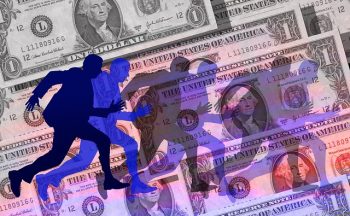Lately, we hear a lot about CFDs. But what do we really mean by “CFD”?
This is a contract stipulating that the difference resulting from a transaction (gain or loss) will be credited or debited to your account. CFDs (“contrat for differences” in English; “contrat d difference” in French) are derivative instruments that allow positions to be taken without making a direct investment in the underlying security .
Thanks to CFDs, you can speculate on the financial markets, stock indices, commodities, currencies, etc. by opening an account with a broker.
These tools have their own advantages and disadvantages.
The main advantage of the CFD (but also its main disadvantage) is the leverage effect. Leverage is a formidable, but double-edged sword: it can multiply gains when the price follows the expected trend. But beware: it can also amplify losses when the price does not go in the desired direction.
Very concretely, a leverage effect of ‘2’ means that, if you have a capital of €1,000, you will invest €2,000. With a leverage effect of ‘2’, it is therefore possible to multiply your gains (but also your losses) by two.
CFDs allow you to trade just about anything! This ranges from currencies (Euro, Dollar, Yen, etc.) to stocks (Apple, Samsung, etc.), including commodities (oil, gold, wheat, etc.).
CFDs also offer you the possibility of “shorting” certain stocks. “Shorter” (or “vader”) means selling short: in other words, selling shares that you do not own to buy them later, and pocket the difference.
The very idea of selling something you don’t own may seem absurd, of course. But with CFDs, it is possible (and very simple)!
Let’s take a concrete example: stock X is trading at €10 and you believe that the price of stock ‘X’ will fall to €8. So you bet low and “short” it. You sell 100 ‘X’ shares (which you don’t own) at €10. So you collect €1,000. Then, you will have to buy back these securities previously sold. And here, two scenarios are possible:
First scenario : the price drops to €8 as you predicted, and you buy back the 100 shares at €8/share. Your purchase is therefore €800. You therefore pocket the difference between your sale (€1,000) and your purchase (€800). In our example, the difference is 0 (,000 – 0).
Second scenario : contrary to your forecasts, the price rises to €11 and you decide to “limit the damage” by buying back your 100 shares at €11 (therefore €1,100). You therefore buy your shares €100 more expensive than you had previously sold them. You therefore lose €100 in the operation.
CFDs trade 24 hours a day, Monday to Friday.
Unlike Futures and SRD shares, CFDs do not have expiry dates. You will therefore not be forced to resell your position on the expiry date and reopen a new one in the event of a major loss.
The main disadvantage of CFDs is also their main advantage: the leverage effect.
As explained above, leverage is a double-edged sword! If you don’t use it sensibly, leverage can literally be your death warrant in the stock market.
Be careful with the lever, then! To find out more about CFDs, you can consult the Actions-Boursieres.fr website.


